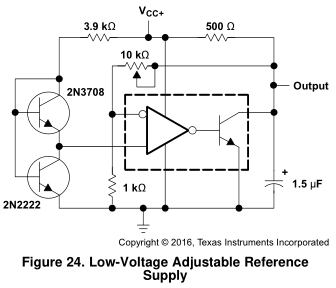Other Parts Discussed in Thread: TINA-TI
Dear teams,
In datasheet of LM311, we provided a method to create a low-voltage adjustable reference supply from Figure 24 . But I'm not understand the necessary of these two transistors. Why not using a resistor divider to provided the input reference for LM311? Is it necessary to add a 1.5uF capacitor at output port?
Thank you for your help in advance.
Regards,
Ricardo


